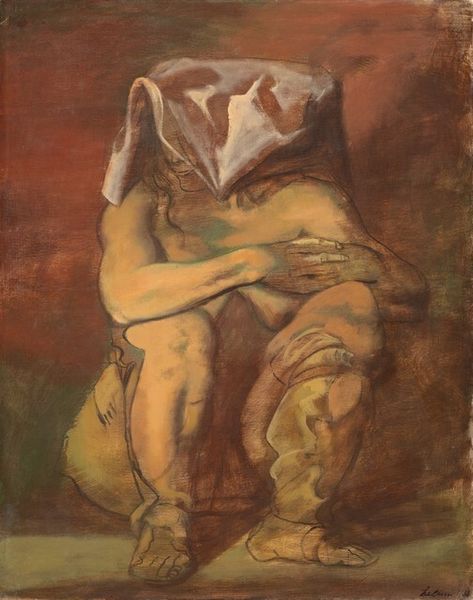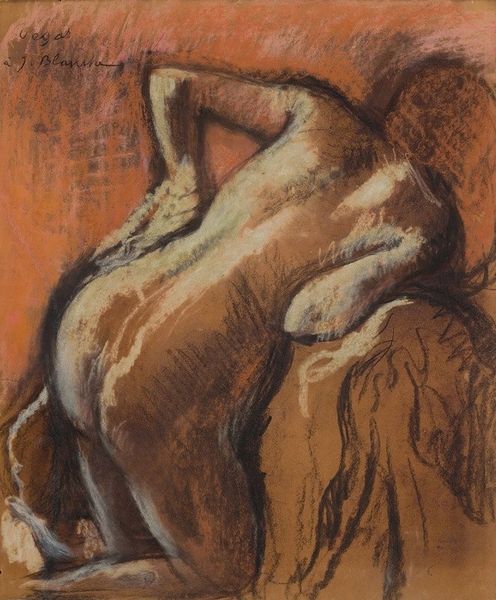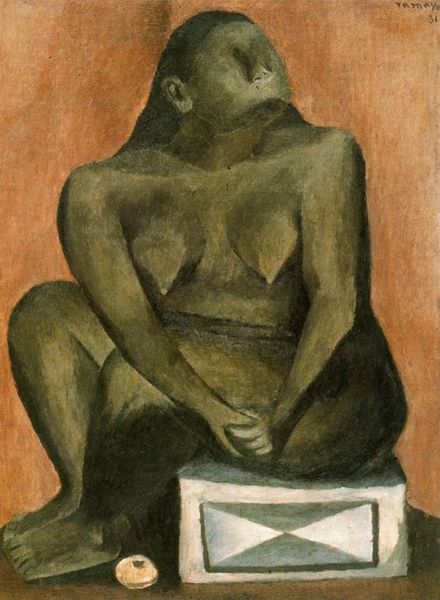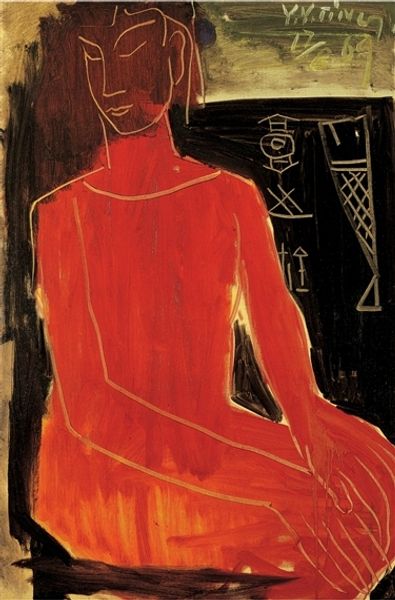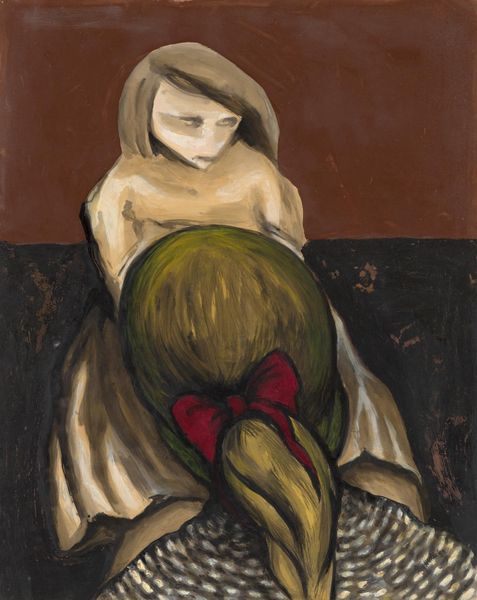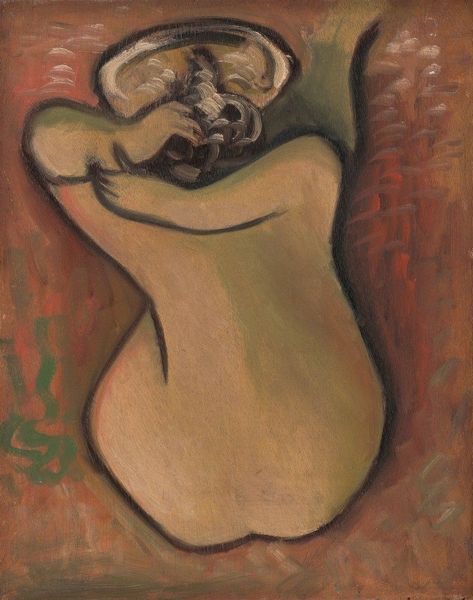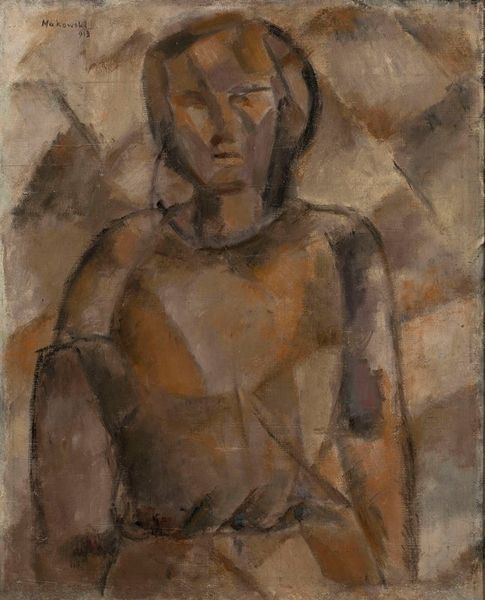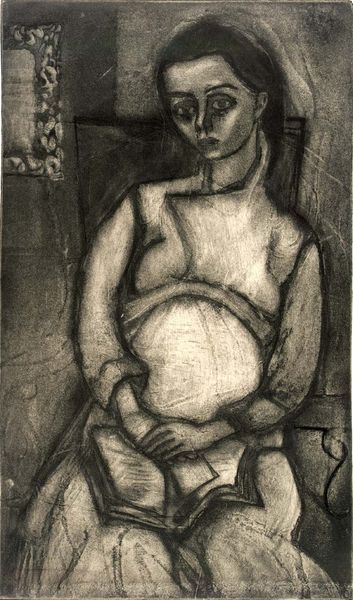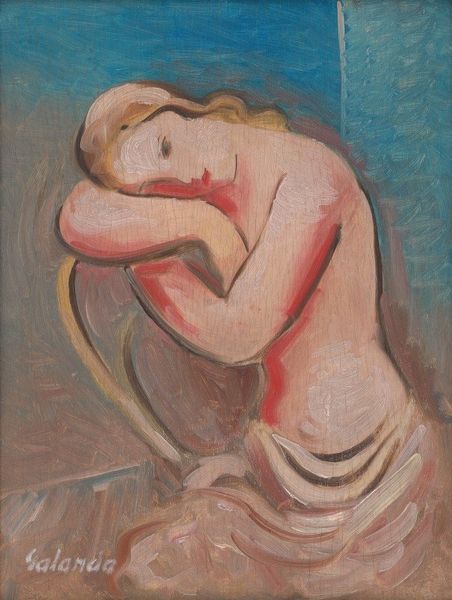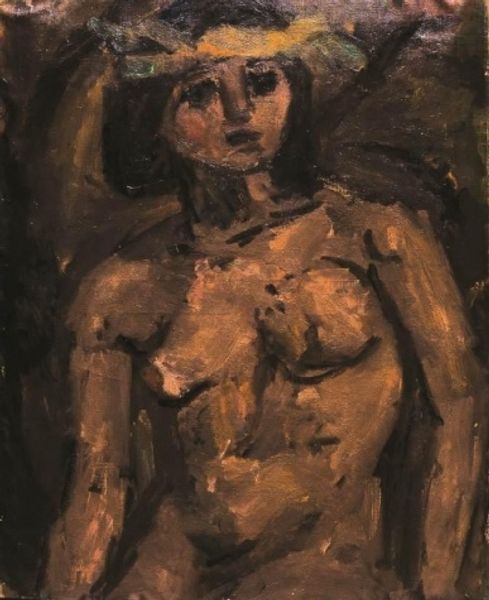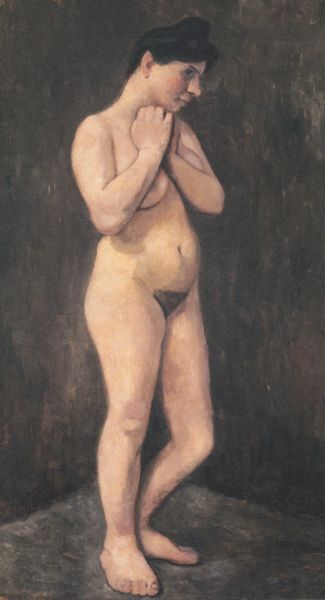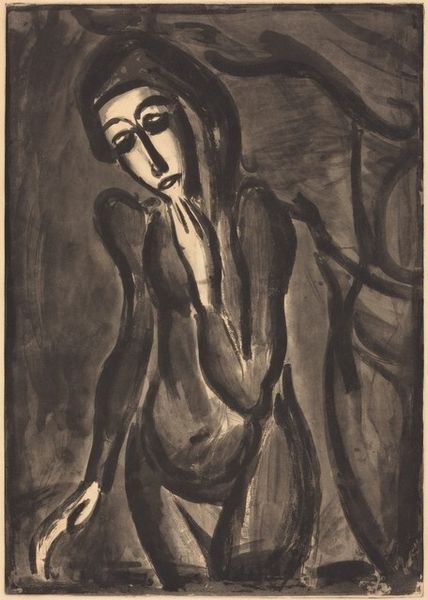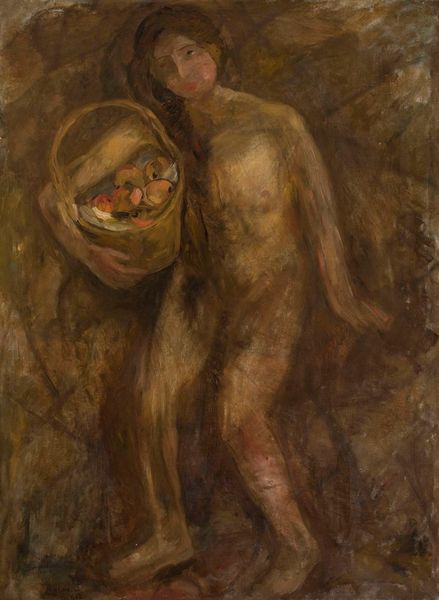
Dimensions: support: 1525 x 1014 x 20 mm
Copyright: © The estate of Leon Underwood, courtesy The Redfern Gallery, London | CC-BY-NC-ND 4.0 DEED, Photo: Tate
Editor: Leon Underwood's "The Ember (Italian Immigrant)" presents a figure cloaked in warmth against a backdrop of shadow. The title hints at a life's journey, and the overall mood is one of quiet contemplation, perhaps tinged with weariness. What do you see in this painting? Curator: For me, it whispers of resilience, doesn't it? The subject's hands, clasped gently, seem to hold stories. The fiery hues of her garment almost suggest a spirit that refuses to be extinguished, despite the darkness around her. Perhaps Underwood saw in her a flicker of hope, a last ember glowing in a world that often tries to snuff it out. What do you think? Editor: I hadn't thought about hope, more about the weight of memory. Curator: And both are valid, aren't they? That's the beauty of art—it holds space for our own interpretations to meet. Editor: It certainly does. Thanks for sharing your perspective!
Comments
tate 6 months ago
⋮
http://www.tate.org.uk/art/artworks/underwood-the-ember-italian-immigrant-t07695
Join the conversation
Join millions of artists and users on Artera today and experience the ultimate creative platform.
tate 6 months ago
⋮
After studying at the Slade School in 1919, Leon Underwood embarked on a prolific career as a sculptor, painter and print maker, producing an eclectic body of work. In December 1925, dissatisfied with the current art market, Underwood left his home and studio in Girdlers Rd. Hammersmith, London, from which he ran the Brook Green School of Art (1920-39), for New York, where he opened a life drawing school in Greenwich Village and where he worked successfully as a book illustrator. The oil painting The Ember (Italian Immigrant) is the only major work produced during the artist’s period in New York (1925-8) and was one of his most ambitious works to date.
